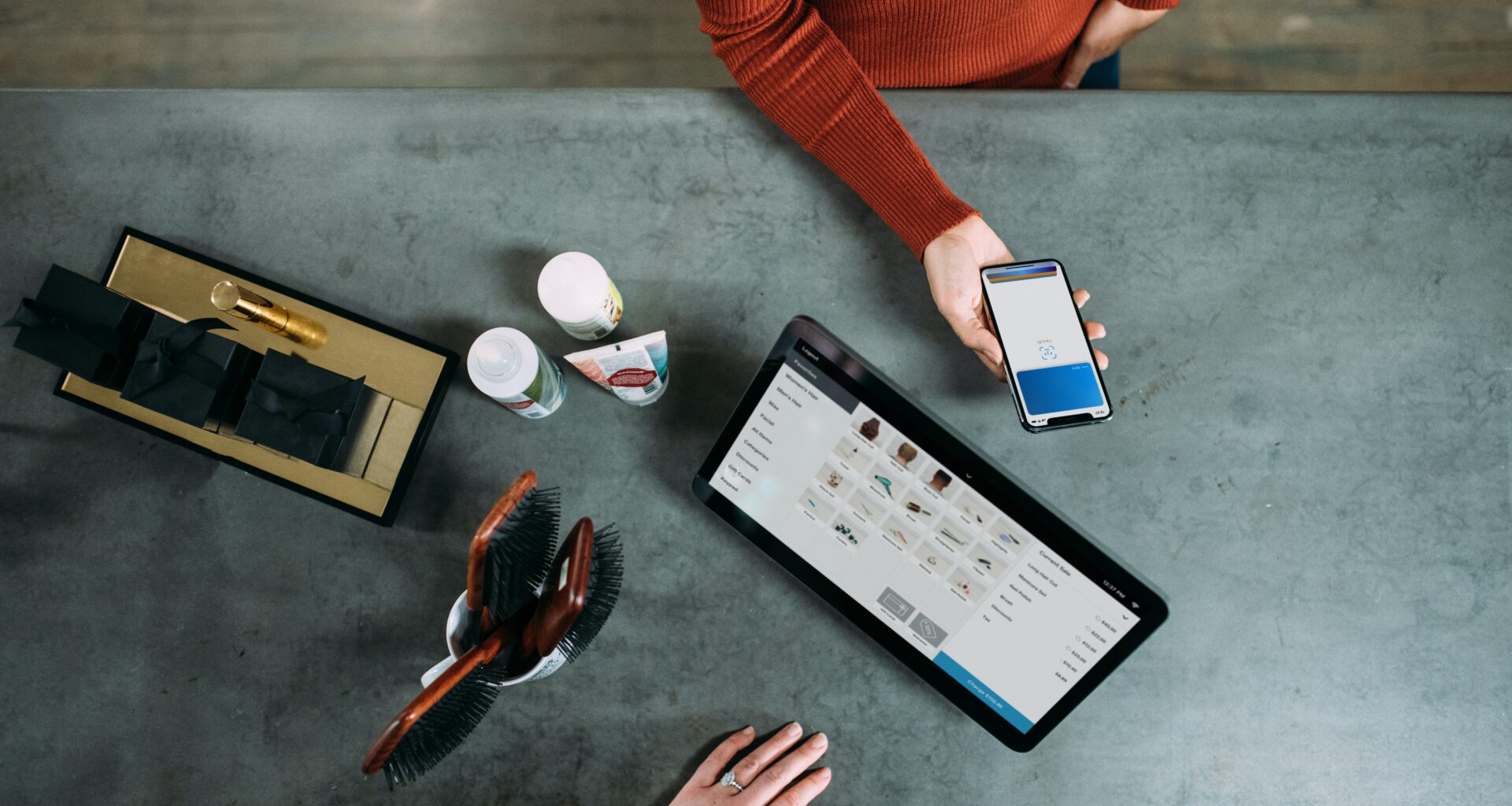Winning brands take the time to understand the customer journey so that they can cater to each step in the path to conversion. The brands that fail to accomplish this task potentially give customers a reason to abandon at any time, for a multitude of reasons. With intense competition across many industries, the stakes are high and the details matter.
Understanding the customer journey means detailing and optimizing all customer interactions with your product or business. This means every engagement on all channels, devices and touchpoints. In today’s increasingly blended digital and physical worlds, customer journeys can involve many touchpoints — even daily interactions between a brand and its customers, even if they never leave the couch.
So, what does it take to get the customer journey right? Let’s answer that question by understanding how most customers interact with a brand, and then seeing where that brand fails them.
The evolving types of customer journeys
First, let’s quickly explain the difference between the customer journey and the customer experience. The customer journey explains the path a customer takes when they interact with a brand or product, including the steps required to complete an action. The customer experience is how a customer feels about that interaction with a product, app or feature.
Friction in a customer journey is an abstract concept, but generally refers to when a customer struggles to use a product or service, either because it fails to work properly or according to the customer’s expectations.
Thus, a low-friction customer journey is often a key factor in a high-quality customer experience. Optimizing both customer journeys and the customer experience is the path to strong customer retention, revenue channels and brand reputation.
Many customer journeys today fall into two primary buckets:
- in-field customer journey
- digital-only customer journey
In-field customer journeys involve a customer performing a series of actions across both digital and physical touchpoints. Testing in-field customer journeys typically requires on-site travel.
In retail, in-field customer journeys have become commonplace. For example, a customer might access a promotional offer sent to their email, use the discount to purchase an item, select in-store pickup, receive a notification that the item is ready for pickup, travel to the nearby store, show or scan a code or mobile receipt to get the item from an employee or on-site locker, and then return home. The customer journey doesn’t end there — and indeed it might never truly end, especially for subscription-oriented companies. The customer might leave a review of the product or rate their customer journey/experience, which is useful data for the business to intake.
As the business landscape evolves, understand that these journeys will also evolve. For example, a quick-service restaurant will cater to customers in a variety of ways. A mobile order-ahead (MOA) option might exist. This requires effective communication between the store and the customer on their phone/OS of choice for the in-store pickup to work effectively — and there are new phones released every year. It all has to work. Delivery is another evolving option that requires effective communication with vendors, such as Uber Eats and Grubhub. Each of these journeys are different, opening up unique opportunities to succeed or fail.
Digital-only customer journeys are a progression through the customer lifecycle that involves no physical relocation. These journeys are more common than ever. You can order takeout from your dining room table, rent a movie from your couch, order new sheets from your bed, purchase a satellite radio subscription from your car, or stock up on toilet paper from your — well, you get the idea. All it takes for abandonment is a push or a swipe of the fingers. Keep in mind this quote from HubSpot CEO Brian Halligan, “Dollars flow where the friction is low.” This adage applies to all industries without exception. Removing that friction starts with understanding where and how it occurs.
The four points of customer journey friction
Nobody likes to use a product that is difficult or unreliable. Any step that introduces friction threatens a purchase or a conversion — and abandonment comes at a massive cost.
Billions of dollars of e-commerce revenue are lost to cart abandonment every year. The problem extends far beyond retail. Market intelligence firm P.A.ID Strategies estimated that annually 5.7 billion euros go to waste on abandoned financial services onboarding engagements, whether it’s new account setup or applying for a credit card — a friction-free experience is the key to conversion. Given the tremendous effect customer abandonment has on an organization, it’s a challenge businesses simply cannot ignore.
Product teams that deliver low-friction experiences to their customers focus on reducing friction in four key areas within customer journey:
- Usability
- Functionality
- Payments
- Operational readiness
Usability. Poor design inhibits the customer’s ability to complete an action in their journey. Usability issues can manifest in a number of vague or specific ways, such as too many steps or screens to complete a task, unclear next steps, something confusing about the app design or the app colors being difficult to read for people with colorblindness.
Remember that usability will vary depending on the individual customer and their specific journey. Consider the example of an apparel company. A customer who is a brand ambassador will have an easy time navigating the basic functionality of an app, but a new customer might struggle to complete basic tasks. Thus, customer journey testing for that brand ambassador might center more on their ability to accumulate and redeem rewards points, while assessing the experience for a first-time customer might entail an account registration and an in-field retail location pickup.
Some usability issues will resonate across multiple customer journeys. For example, as consumers start to care more about their data privacy, a company that requests unexpected PII data for account setup might be met with hesitation — and hesitation kills deals.
Functionality. Functional bugs include app crashes, 404 error messages, broken links, endless loading and more. It doesn’t matter how well the app works in a staging environment — if these issues occur when the product is in the hands of real customers with real devices on real networks, it’s not functioning properly.
While customers accepted some defects in the early days of mobile apps, their patience has waned over time. A survey by Qualitest showed that 88% of users will abandon an app when they experience a defect. There’s no room for error.
Mobile apps are now many brands’ primary means of interaction with customers, and they should prioritize digital quality accordingly. If the shopping cart shows incorrect items or quantities, for example, that customer will likely abandon that purchase in favor of a competitor with a functional cart. If a banking app displays the wrong currency, it places immediate doubt into the mind of the user, who can immediately find several new bank account promotional offers in their email inbox. Brands that win test these customer journeys thoroughly ahead of time to discover the defects before the customer does.
Payments. All this effort toward creating friction-free customer journeys boils down to generating and protecting your company’s revenue. If they can’t easily pay for your products, the rest is likely moot. And if you overcharge them for a product or service, wave goodbye to that former customer — they’re not coming back.
With a plethora of payment instruments, digital wallets, processors, terminals, currencies, promotional offers, account providers and fulfillment options, digital products can fail customers at multiple junctures in their payment journey. To name some examples, payment methods might be incorrectly declined, incorrect amounts might display, promotions might fail to redeem, or refunds might not process.
Some organizations try to test these transactions with dummy cards in a staging environment, which don’t process end-to-end. Transaction simulations fail to account for the myriad ways a customer in the real world might experience payment failure or friction. Consider the example of a bundled media package involving a music player and a streaming television provider — an industry rife with churn. The customer must not only be able to successfully (and easily) redeem that promotional offer with their payment instrument of choice, but both platforms must fulfill the subscription according to the expected contract terms and rate in the market where the customer is requesting the bundle. There are many opportunities for failure or friction in the payment chain, all of which increase the odds the customer will unsubscribe.
Operational readiness. This type of customer friction applies primarily to in-field journeys. In these cases, there is a disconnect or an inefficiency between the physical and digital journey taking place.
QSRs and retailers are particularly prone to friction in operational readiness. If a brick-and-mortar location is unable to fulfill an order in time, fails to inform a customer where to park/pick up, can’t track the fulfillment process or just outright screws it up, these are lost revenue opportunities that very often result in refunds or returns.
It’s especially important to invest in understanding your operational readiness as these blended journeys will continue into the future. Buy online, pickup in store (BOPIS), also called click and collect, accounted for $72.46 billion in U.S. shopping revenue in 2020, according to Insider Intelligence — and while the pandemic sparked the trend, it hasn’t abated. Consumers opt for BOPIS because it is more convenient for them, unless the retailer fails to alleviate friction in these journeys. Additional consumer options like reserve online, pickup in store (ROPIS) and buy online, return in store (BORIS) will continue to shape customer journeys as retailers evolve to meet their needs. Where, when and how customer friction occurs can only be accurately determined by real testers validating the customer journey in the real world.
Keep in mind, all four types of customer journey friction reflect a failure to meet customer expectations, and play a big role in customer abandonment. If you fail to meet a timeline, the experience is too buggy, order pick-up instructions are unclear or it is too difficult to pay, the result is a misalignment in customer expectations that comes with a high price.
Realize the benefits of reduced friction
Customers are more likely to remain with a brand that provides a low-friction customer journey, and they’re even willing to pay more for it. According to a report by PwC, luxury and indulgence products that deliver a positive customer experience can command up to an 18% price premium. While the premium varies by industry and product, the point stands that brands can command more revenue when they demonstrate success in alleviating the customer journey. A similar figure from SuperOffice showed that 86% of customers are willing to spend more on a brand that delivers a great customer experience.
Applause helps brands all over the world deliver exceptional digital experiences and customer journeys for clients. Nobody else can offer you the services and peace of mind Applause provides. We couple UX research with a million-plus digital community that extends across 200 countries and a research ops team to deliver substantive results. We recruit these testers — real people in real locations in real environments — to execute your customer journeys. Our testers uncover technical defects and deliver unbiased feedback, providing both technical quality expertise and a real user perspective. Applause provides detailed reports with videos, screenshots, defects, and user sentiment to help you assess the quality of your customer journeys.
Talk with us today about how we take the guesswork out of customer journey testing to help clients like you achieve your digital quality and customer retention goals.
Featured Image by Blake Wisz












